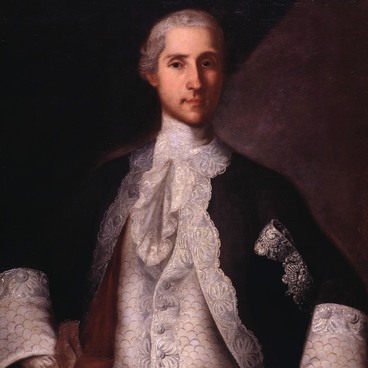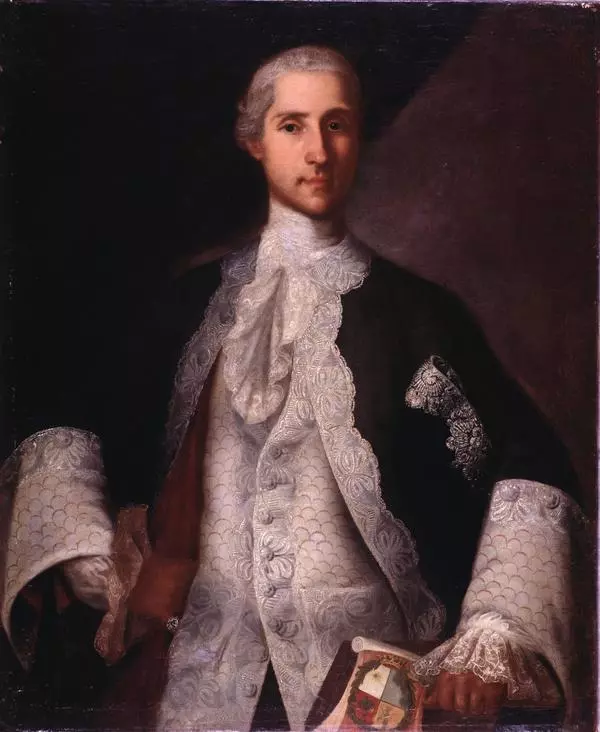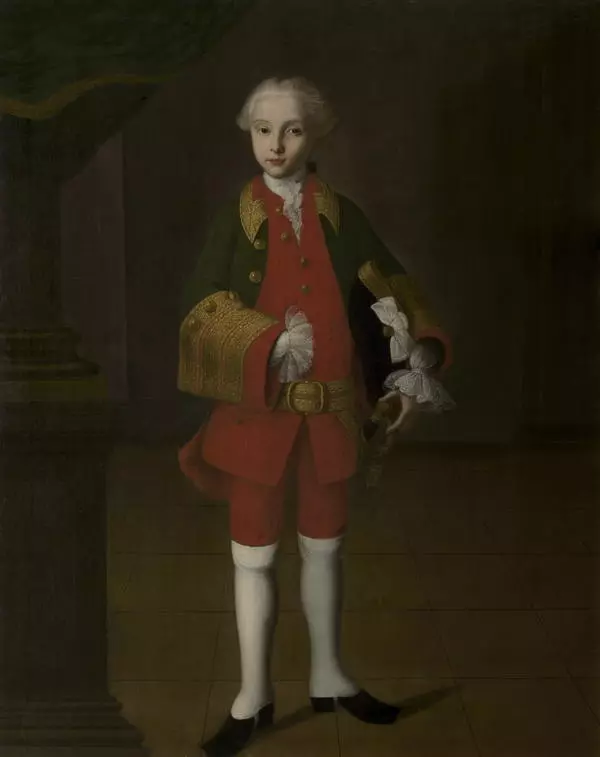Ivan Vishnyakov, a Russian painter, was born in 1699 in Moscow into a family of craftsmen. He studying under Louis Caravaque, a French master that introduced the rococo style to Russia. After that, he studied under Andrew Matveev, a painter and one of the founders of the portrait genre in Russian painting. Vishnyakov worked in Petersburg most of his life, painting icons, ceremonial secular portraits. He also participated in painting palaces, churches and other buildings. His paintings peculiarly unite the traditions of Russian middle age art and features of European rococo.
Vishnyakov was commissioned to paint a portrait of Ksenia Tishinina by her husband Nikolai Tishinin, the founder and owner of the Tikhvino-Nikolskoe manor, which is located on a territory of contemporary Yaroslavl Oblast. Tishinina is depicted almost knee-deep, standing. She has a simple Russian face: rosy cheeks, hazel eyes, black eyebrows and pursed lips. It saved baby-like puffy cheeks, but the sight is serious and concentrated.
Tishinina is dressed in a gala dress with fancy silver lace all the way down the front neckline, sleeves, hoop-skirt (a wide skirt) and the top part of the dress (a bodice). Her chest has a decorative rose, her right hand holds a fan, and a watch on a chain with a little golden key is situated at her waistband. Her hair is fashioned in a trendy way for her age: a black bow ties them on a hindhead, and a red ribbon is tied around her head.
What is special about this painting is the pretty and detailed landscape depiction: it was rare to see one on ceremonial portraits of the 18th century. The park alley formed by elements of landscaping and a fountain far behind can be seen to the right of Tishinina. As it was customary on contemporaneous ceremonial portraits, there is a column painted behind her shoulder.
Vishnyakov painted the portrait of Tishinina in 1755 together with the portrait of her husband. There was a joyous occasion for the creation of these paintings: Tishinin received the first officer rank and marked the occasion by commissioning a famous painter from the capital to paint the portraits. But shortly after they were finished, a tragic event occurred: Ksenia Ivanovna died during childbirth at 20 years old. After that, Tishinin dedicated a considerable amount of time to improving his manor.
Vishnyakov was commissioned to paint a portrait of Ksenia Tishinina by her husband Nikolai Tishinin, the founder and owner of the Tikhvino-Nikolskoe manor, which is located on a territory of contemporary Yaroslavl Oblast. Tishinina is depicted almost knee-deep, standing. She has a simple Russian face: rosy cheeks, hazel eyes, black eyebrows and pursed lips. It saved baby-like puffy cheeks, but the sight is serious and concentrated.
Tishinina is dressed in a gala dress with fancy silver lace all the way down the front neckline, sleeves, hoop-skirt (a wide skirt) and the top part of the dress (a bodice). Her chest has a decorative rose, her right hand holds a fan, and a watch on a chain with a little golden key is situated at her waistband. Her hair is fashioned in a trendy way for her age: a black bow ties them on a hindhead, and a red ribbon is tied around her head.
What is special about this painting is the pretty and detailed landscape depiction: it was rare to see one on ceremonial portraits of the 18th century. The park alley formed by elements of landscaping and a fountain far behind can be seen to the right of Tishinina. As it was customary on contemporaneous ceremonial portraits, there is a column painted behind her shoulder.
Vishnyakov painted the portrait of Tishinina in 1755 together with the portrait of her husband. There was a joyous occasion for the creation of these paintings: Tishinin received the first officer rank and marked the occasion by commissioning a famous painter from the capital to paint the portraits. But shortly after they were finished, a tragic event occurred: Ksenia Ivanovna died during childbirth at 20 years old. After that, Tishinin dedicated a considerable amount of time to improving his manor.




